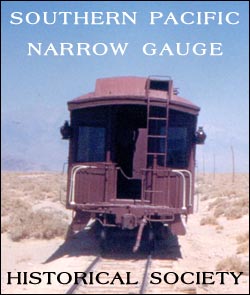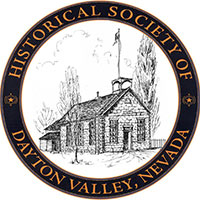

Reference Data.
Incorporated.June 18, 1873
Corporate Ownership.
Narrow Gauge:
Santa Cruz Railroad
1873-1881
Southern Pacific
1881-1883
Standard Gauge:
Southern Pacific
1883-1988
Southern Pacific - Rio Grande Industries
1988-1996
Union Pacific
1996-2012
Santa Cruz County Regional Transportation Commission
2012- Present
Distances.
Santa Cruz - 0 mi
Liebrandts - 1.5
Woods - 2.2
Soquel - 5.2
Aptos - 8.7
Leonards - 11.5
San Andreas - 14.2
Martins - 17.4
Watsonville - 19.5
Pajaro - 21 mi
Rail Weight.
iron, 35 lbs. 1873-1881
Average Train Speed.
Freight: 14 mph
Passenger: 20 mph
Max. Grade.
2%
Equipment Roster
April 23, 1881
Locomotive "Pacific"
Locomotive "Jupiter"
Locomotive "Betsy Jane"
2 Passenger Coaches
1 2nd Class Coach
3 Gondola cars
1 Baggage or Express car
4 Box cars
2 Rack cars
21 Flats
4 Hand cars
3 Push cars
Santa Cruz Railroad.
By John Hall.I n 1869 Fredrick H. Hihn began advocating for a railroad in Santa Cruz County. He suggested that the property owners put up half the needed funds and the County issue bonds for the balance. He explained that a railroad would increase property taxes and pay for the bond costs. Three years later the people voted on the issue. The bonds were approved. Santa Cruz voters outvoted the dissenting Watsonville voters. This political division between the western and eastern parts of the County was to come back and haunt the narrow gauge railroad throughout its brief life.
The Santa Cruz Railroad was incorporated on June 18, 1873. The company was formed for the purpose of constructing, conducting and maintaining a railroad in Monterey and Santa Cruz counties. The route of the road commenced at Pajaro Station on the line of the Southern Pacific Railroad in Monterey county, running through Santa Cruz county, crossing San Lorenzo river, and along the coast to the northern boundary of Santa Cruz county near Point Ano Nuevo.
Fredrick Hihn and Claus Spreckels became majority stockholders with Hihn eventually holding 46 percent of the stock and Spreckels holding 36 percent of the stock. Hihn needed the railroad to improve transportation for his various business interests in the county and Spreckles needed a railroad to transport sugar beets to his experiential sugar beet refinery in Soquel. George Treat, a sawmill owner , held four percent of the stock. Treat's stock was paid partly with cash and mostly with lumber to be used for railroad construction. The remainder of the stock was sold to 96 landowners and business people in the County. The majority of the stockholders held only one share of stock.
Construction of the three foot narrow gauge railroad began in December 1873. In October 1874 the first locomotive, Betsy Jane, arrived. As soon as the winter rains were over, construction accelerated. By December 1874 the railroad extended five miles between the San Lorenzo River, and Aptos. Stockholders went on an excursion to inspect the completed segment of the railroad.
With the first segment completed the County was now permitted to issue bonds. However the Watsonville interests who thought the railroad would not benefit them, sued for an injunction to stop the issuance of the bonds. This was the first on many legal actions to disrupt the railroad's progress.
Meanwhile Claus Spreckels began construction of the California Beet Sugar Company. Up to this time refining sugar beets in North America had not been a profitable business. Spreckels decided to try his hand at refining beets and began construction of a new mill in Soquel. The mill would be served by the railroad.
As the lawsuits worked their way through the courts the railroad slowly continued construction using funds from additional stock sales and assessments on existing stockholders. By October 1875 it was projected that the railroad would be finished the following month. The completion was put on hold in December 1875 when the courts ruled against the County bond issue, but that was not the end of the dispute.
By March 1876 with the lawsuits partially resolved the County issued $114,000 of the $240,000 of authorized bonds for railroad construction. With cash in hand the pace of construction quickened and the railroad opened for operation between Santa Cruz and Watsonville on May 18, 1876. The bridge across the Pajaro River to Pajaro and the Southern Pacific Railroad was still under construction.
Just prior to opening day the railroad received the locomotive Pacific from the Baldwin Locomotive Works. In September of that year the locomotive Jupiter arrived, also from Baldwin. The bridge across the Pajaro River consisted of three 150 foot long Howe Truss spans and 416 feet of trestle. It was completed in November 1876. Passengers and freight could now travel between Santa Cruz and Pajaro.
While the railroad initially carried a significant amount of freight and passengers, financially it was never a success. The railroad lost money for four straight years, the greatest amount was reported in June 1877 as a loss of $27,033 for the year. This annual loss alone may have been overcome as traffic increased along the line if other factors had not occurred. First, in January 1878 a major winter storm tore up the track along the beach between the Santa Cruz & Felton Railroad pier and Liebrandt's Baths. Second, in December 1879 the Soquel Sugar Beet Mill was closed as a financial failure. Third, in May 1880 the South Pacific Coast Railroad was completed and provided a quicker, more direct route to San Francisco markets. Fourth, in December 1880 the California Supreme Court ruled that the County Bonds were issued illegally because the railroad never made it to Point Ano Nuevo. Fifth, in January 1881 another major storm washed out the San Lorenzo River Bridge and left the Howe Truss on the beach below. Without funds to repair the bridge the Santa Cruz Railroad ceased to operate.
In April 1881 Fredrick Hihn sold the Santa Cruz Railroad to the Pacific Improvement Company for the benefit of the Southern Pacific Railroad. The SP rebuilt the San Lorenzo River Bridge and opened the railroad for service in June 1881. The SP was now in direct competition with the South Pacific Coast Railroad for the San Francisco to Santa Cruz traffic. In November 1883 the Santa Cruz Railroad was converted to standard gauge and absorbed into the Southern Pacific Railroad.
MacGregor, Bruce. The Birth of California Narrow Gauge. Stanford: Sanford University Press, 2003.
1876 Biennial Report of the Board of Railroad Commissioners.
1877 - 1878 Biennial Report of the Commissioner of Transportation.
1880-1881-1882 Biennial Report of the Board of Railroad Commissioners.
Record Books of the Fredrick H. Hihn Company, UCSC Hihn-Younger Archive
Reference Material Available Online:
Maps.
Santa Cruz Railroad for Google Earth
By John Hall
Photographs.
Collected Santa Cruz Railroad Photographs.
Images collected from private collections, libraries and historical societies.
Manuscripts.
F. A. Hinn to Pacific Improvement Company: Bill of sale.
Hihn-Younger Archive, University of California Santa Cruz.



